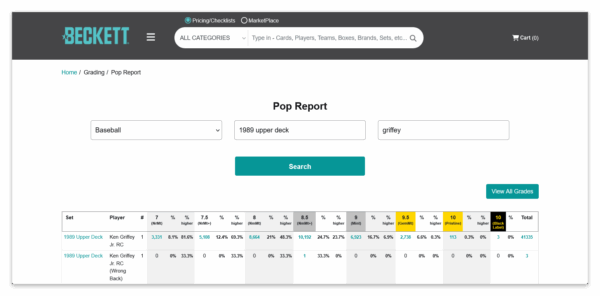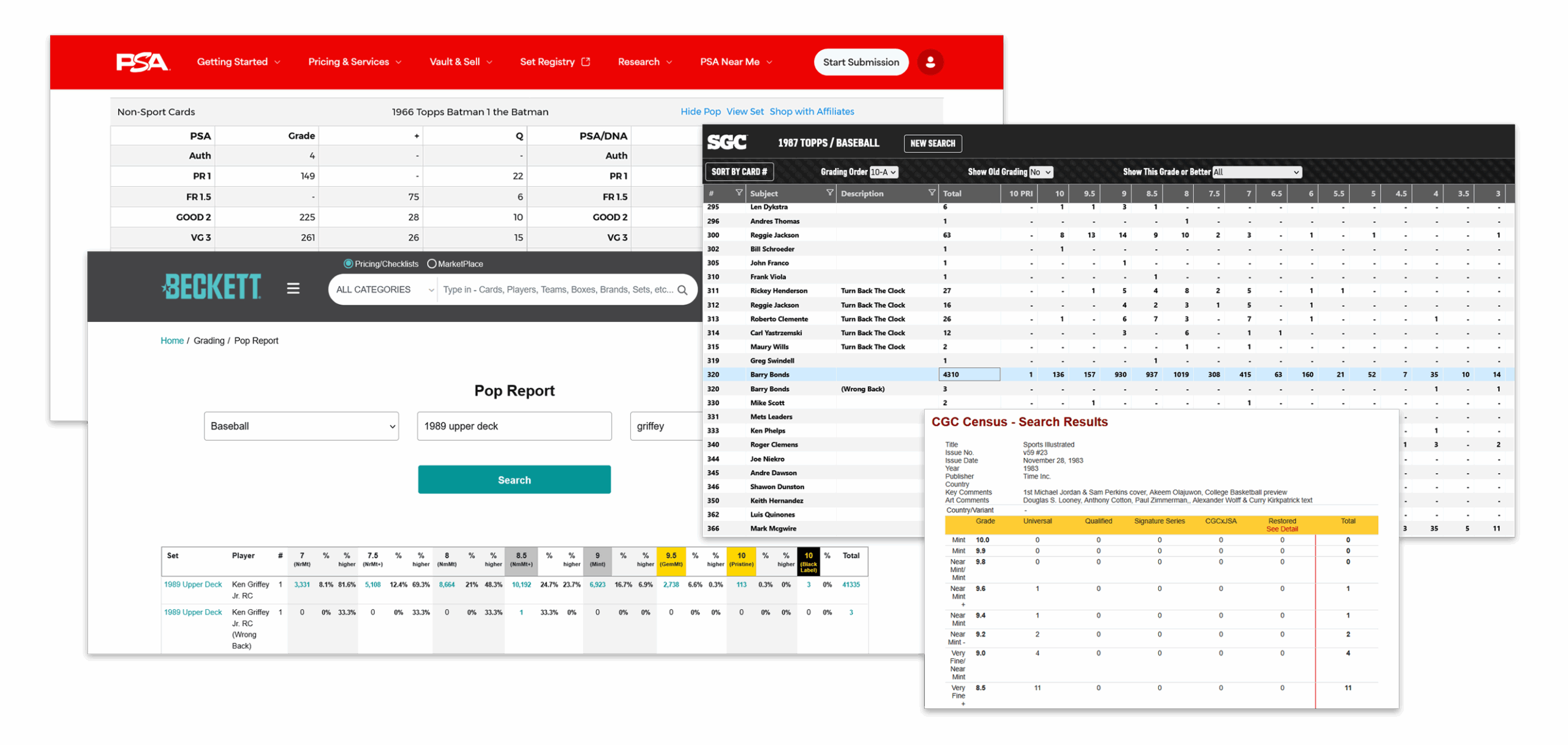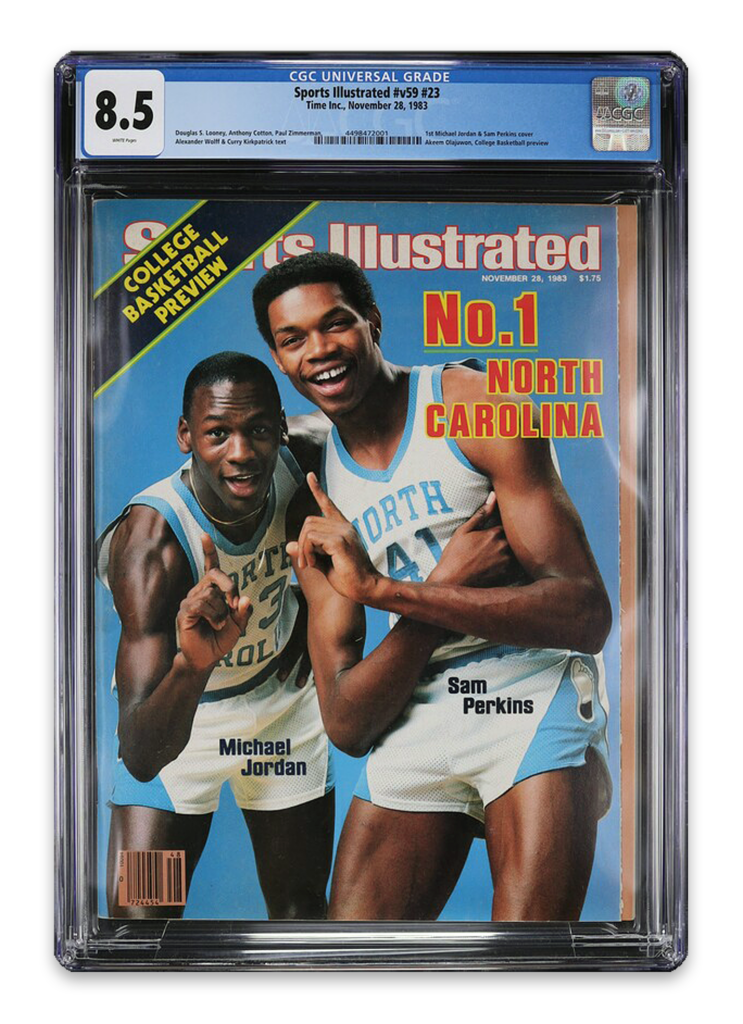Population reports play a critical role in the world of graded trading cards, comic books, magazines, video games, and other collectibles. These reports are comprehensive lists published by the major grading companies, showing how many items of a specific type and grade have been officially evaluated and certified. Collectors, hobby dealers, and casual buyers use population reports to guide their buying and selling decisions.
What Is a Population Report?
A population report is a public record of how many unique items have been graded, broken down by grade and type. For example, PSA, SGC, BGS, CGC, and other grading companies keep these databases up-to-date. You can look up a trading card or a video game and see how many have scored a Gem Mint, Mint, Near Mint, or any other grade. It’s an easy way to check how rare or common something really is.
Below is the PSA population report for the 1966 Topps Batman #1 card. As you can see, Mint 9 copies are extremely rare, with only 13 out of 1,500+ copies graded, and no Gem Mint 10 copies have been graded.

Why Population Reports Matter
Knowing how many high-grade copies exist affects prices and desirability. Rarity plus demand boosts value. If a desired card has just one “Gem Mint 10,” it becomes very special. If there are hundreds or thousands, it’s less impressive. The same rule applies for vintage magazines and classic video games. Everyone wants something rare, and population reports prove what’s hard to find and what’s everywhere.
Buyers use population reports to be sure they’re not overpaying. Sellers use them to price items fairly. If you’re holding a rare popular graded item and see only a handful in top grade, you can ask for more money. On the flip side, if there are lots of the same grade, you may need to lower your price. It’s a simple way to match supply with demand.
Below is an example of the CGC population report for a Sports Illustrated from Nov. 26, 1983 with Michael Jordan and Sam Perkins on the cover.

Population Reports and Market Transparency
Transparency is key in collectibles, and population reports help with that. Many hobbies — sports cards, comics, video games — used to be guesswork. You never knew how many copies were out there, especially in top condition. Population reports take out the mystery. They show clear numbers, so anyone can see how common or rare an item is.
This helps prevent scams and fake rarity. For example, someone might call a magazine “super rare” when there are actually dozens graded at top level. The population report gives proof, not just hype. That’s good for everyone in the hobby — including new collectors who want to make smart purchases.
Population reports are not always 100% accurate. This is primarily because collectors sometimes resubmit items for grading by removing them from their cases and sending them to the same or a different grading company, hoping to receive a higher grade.
Below are the SGC grading results for 1987 Topps Baseball. Card #320 featuring Barry Bonds stands out as the most highly graded card in the set. Out of 4,310 graded copies, only 136 received a Gem Mint 10 grade, with just one achieving the rare Pristine 10.

Tracking Trends and Making Decisions
Population reports are also useful for spotting trends. If you see a sudden jump in high-grade cards or games, it could mean more collectors are finding stashed items in great shape. Sometimes, a big surge in supply can hurt values. On the other hand, if population numbers barely budge over several years, the rarity stays strong and prices usually hold — sometimes they even go up.
Collectors use population reports to guide their buying, selling, and holding decisions. If you spot a popular item with very few high-grade examples, it might be worth acquiring, as demand may have a chance to stay strong. Conversely, if many new high-grade copies start appearing, you might want to sell before prices soften.
Of course, many exceptions exist. For instance, the 1989 Upper Deck #1 Ken Griffey Jr., is one of the most heavily graded cards in the hobby — with over 185,000 copies and counting, across the four major graders — yet demand for Pristine, Gem Mint, and Mint+ examples remains exceptionally high.
Below are the BGS grading results for the 1989 Upper Deck Griffey. BGS is currently the only grading company that offers a ‘Pristine+’ grade, which features a striking black label. Three copies of the Griffey card have received this prestigious grade.

Beyond Value: Preservation and Historical Records
Population reports aren’t just for prices. They also help preserve history. Over time, these records show what’s survived, what’s been lost, and what matters to collectors. You can track how many vintage magazines have been saved, or how many rare video games have been preserved and protected through grading.
Conclusion
In short, population reports are a basic tool for anyone serious about collectibles. They make buying and selling fair, straightforward, and grounded in facts. That keeps prices honest and helps everyone avoid costly mistakes. Whether you care about basketball cards, old comic books, classic games, or rare magazines, knowing population numbers keeps you one step ahead.

GRADEx Staff
This story is a team effort. Our writers, editors, and hobby experts worked together, researching and reporting to bring you this piece.






